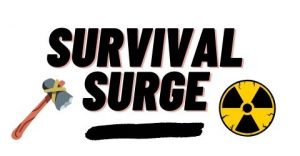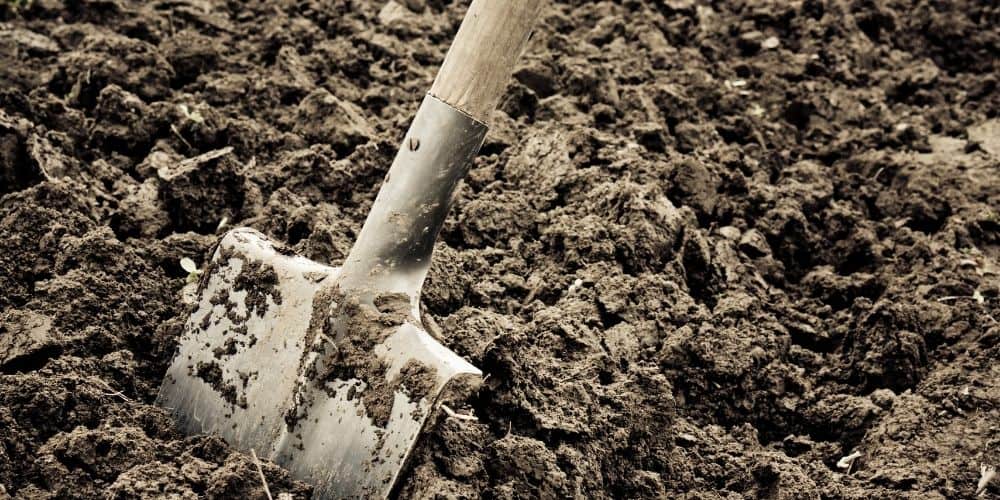There are many “shovels” out there, and not all of them are created equal. In fact, some shovels might be perfect for the job at hand, while others will end up being a waste of money.
The goal then becomes finding the right type or brand that will meet your needs as both an individual and someone who has specific requirements for their tools.
We’ll help you find what kind of shovel best suits your needs by going over each one individually, so read on if you’d like to learn more.
11 The Different Types Of Shovels
1. Tree Planting Shovel
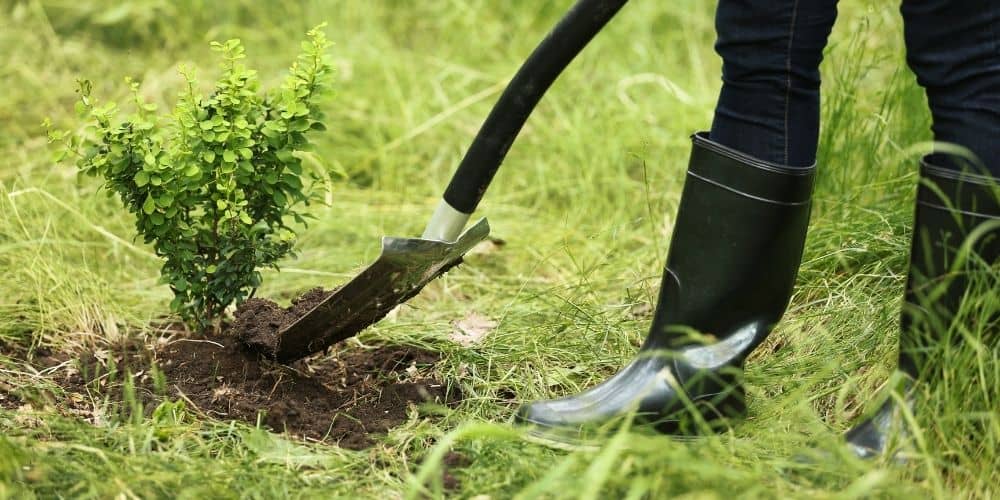
A tree planting shovel usually has a narrow blade with a pointed tip, and they are perfect for digging holes for trees. The tip and narrow edge can easily dig into tightly-packed soil.
These are great for planting trees in forest areas or your backyard. Some shovels have an offset handle, helping you work more efficiently.
2. Trenching Shovel
Trenching shovels are explicitly designed for digging trenches. They have a sharp blade tip that helps dig through rough terrain, and the squared blade sides help create smooth trench sides.
Some models also have square blades, which lets you transport more soil at any one time.
They can be used in commercial and residential applications, such as installing water pipes or building an underground basement. They can also be used in agriculture, such as when removing unwanted plants from the ground.
3. Snow Shovels
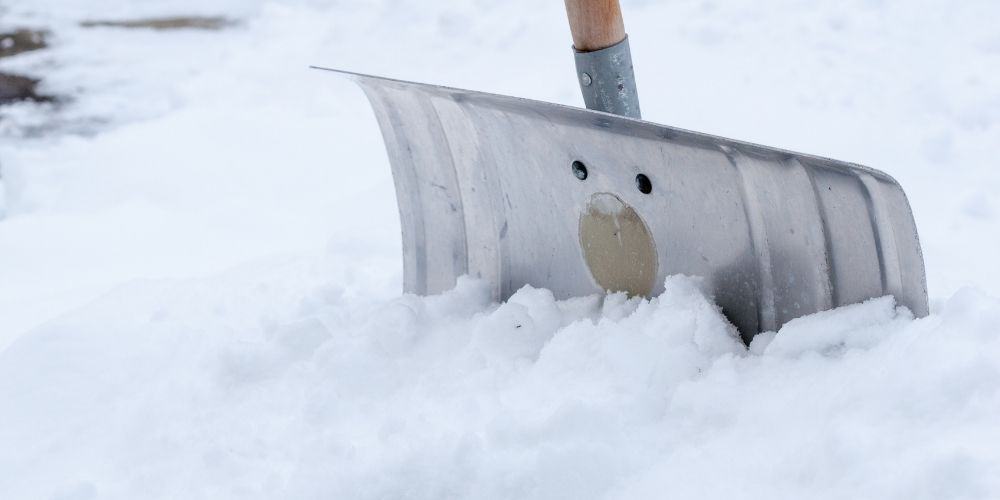
People in regions like the Northeast and Midwest often find themselves clearing their driveways and sidewalks of snow. Rather than using your regular garden shovel, you can use a snow shovel to make your life easier.
Snow shovels are characterized by their broad heads that curve inward. This design is made for pushing snow forward, so you don’t have to repeatedly lift or drag it. Not only will this save time, but also energy!
4. Scoop Shovel
A scoop shovel is used for moving loose material, such as soil from a trench or sand from a pile. They are typically equipped with a long handle and a large blade to make transporting the material from one place to another much more straightforward.
Initially, these shovels were used for moving coal but are now widely used in construction work, gardening, landscaping, and farming, among other things.
5. Edging Shovels
An edging shovel is a tool used to create straight lines or borders between gardens, lawns, and other areas of land. They typically have a rectangular or triangular-shaped blade designed to cut into the ground and create a clean edge.
Many edging shovels also have a footplate, so you can apply additional pressure when cutting through tough soil.
6. Post Hole Shovel
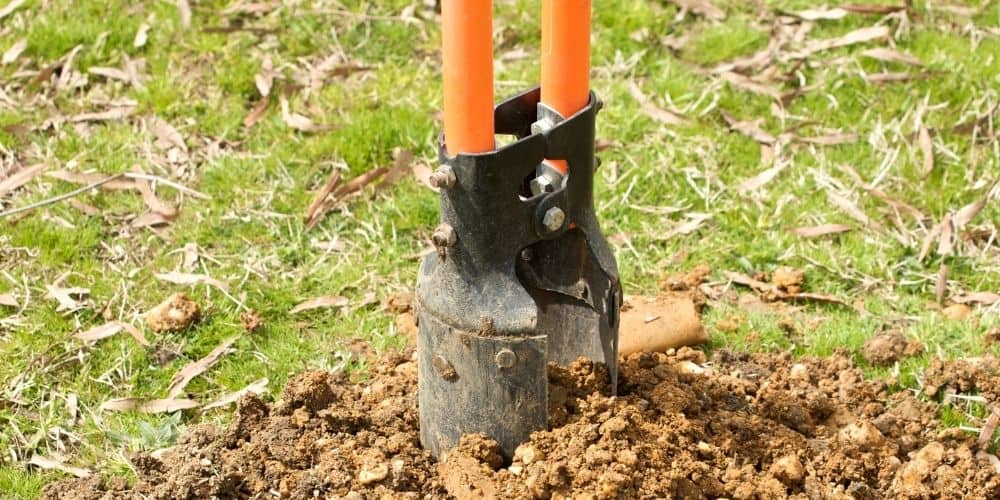
A post hole shovel is used for digging holes to insert posts into the ground, especially long and narrow ones. They have two blades and two handles, making it easier to dig those types of holes.
Post hole shovels come in various sizes to fit different types of posts. The size and weight of the post-hole shovel will depend on what kind of hole is being dug.
A typical post hole shovel has a blade about 10″ long with a shaft around 45″ long. This design makes it easier to dig holes but prevents you from digging trenches or ditches.
The best time to use a post-hole shovel is when you’re setting up new gardens, building fence posts, or even when setting up your own mailbox.
7. Square Point Shovel
A shovel with a point on one end and a wide blade on the other end is called a Square Point Shovel. This type of shovel is perfect for moving loose materials, such as dirt and gravel. It can also be used to remove debris from your driveway. The flat edge on the bottom of the shovel head provides stability when pushing against the blade.
Furthermore, this type of shovel is perfectly shaped for mixing concrete. It is excellent for those working with dry ingredients, such as sand and cement powder, because it can mix bulk material with one big scooping action.
8. Flat Shovel

The flat shovel is one of the most versatile shovels out there. It can be used to move loose materials, but it’s also suitable for moving soil and gravel. Although, the pointed or rounded edges make it better for different tasks.
9. Power Shovel
Power shovels are large pieces of machinery with a shovel-like attachment built-in. Go to any country worldwide, and you’ll find them plotted around most construction sites.
Their primary purpose is to remove debris on a much larger scale than a regular shovel.
They are also found at mining sites and land-reclamation projects. Power shovels allow the user to clear an entire area quickly by scooping debris into a pile that can easily be moved to another location.
10. Garden Shovel
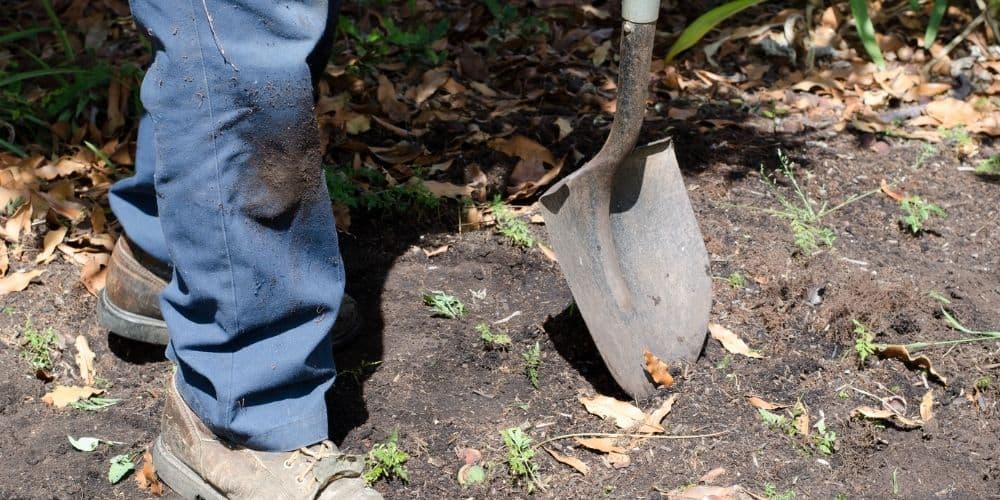
A garden shovel is a type of shovel that is designed for gardening. They are usually smaller than other shovels and have a narrower blade, making them ideal for digging in tight spaces. Garden shovels also typically have a pointed blade, which can penetrate the soil more easily.
11. Pointed Digging Shovels
A pointed digging shovel is a type of shovel that has a sharp blade. This type of shovel is ideal for digging in hard soil or clay, and the blade is also narrower, making it easier to get into tight spaces.
The Parts Of A Shovel
Shaft
The shaft is one of the most critical parts of any shovel. It connects the blade to the handle and is usually made of wood, fiberglass, or metal.
It’s essential to find a durable shaft, as they are prone to damage after extended periods of use. The most common problem is when the shaft disconnects from the blade.
If you end up with a broken shovel, there are some quick fixes, such as zip ties or hose clamps.
Blade
There are many different blade shapes and sizes, and the most common types are the scoop, the snow shovel, and the spade.
Scoop blades are curved and perfect for moving loose materials such as sand, gravel, or dirt. They can also be used for backfilling.
Snow shovel blades are flat and have a sharp edge that’s can be used for chipping away at the ice. However, I wouldn’t recommend it as they aren’t built for this purpose.
Spade blades are triangular and have a sharp point that’s great for digging.
When choosing a blade, consider the type of material you’ll be working with. If you’re moving heavy materials, then you’ll need a blade that’s strong and durable. If you’re using it for light tasks, you can go for a lightweight blade.
Handle
Shovel handles generally come in one of two styles: D-grip and T-grip. They also come in various lengths to accommodate different users and often contain ergonomic features like foam or rubber grips. The most important thing to look for is whether the handle material provides proper support.
Factors To Consider When Choosing A Shovel
What You're Using It For
If you want a shovel that’s going to work, you first need to consider what you will be using it for. Digging a trench? Then I recommend a trenching shovel with a sharp blade.
However, if you’re just moving loose material, you need something with a large and durable blade. It’s also better if the blade has curved edges, as this helps pick up more materials.
Durability & Materials Used
When choosing a shovel, consider the durability and materials of the blade and shaft. The most common materials are wood, fiberglass, and metal.
Wood is a popular choice for shovels because it’s solid and durable, but it can also be prone to rotting if left outside. Fiberglass is a lightweight and robust material that doesn’t corrode or rust. Metal is the strongest option, but it can also be the heaviest.
Weight & Size
The weight of the shovel is vital. Heavier shovels are more durable but can be harder to use. If you’re going to be using your shovel for extended periods, then you’ll want one that’s lightweight but still sturdy.
Size is also important. If it’s too small, you’ll put stress on your back, and if it’s too big, it’ll be challenging to transport materials or dirt.
Before We Part
Most people think all shovels are the same. However, this couldn’t be any further from the truth. Because there are so many different types available, you need to know what it will be used for.
There’s no point buying a tree planting shovel if you’re trying to remove snow from your driveway.
